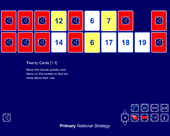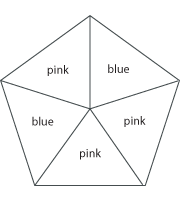Consolidation and practice
These resources are to support children in guided or independent work. Roll over the highlighted resources for a description.
Number spinners

This interactive teaching program (ITP) is an ICT-based tool to support the exploration of number, reasoning and problem solving. Number spinners ITP allows the child or teacher to generate 3, 4, 5 or 6 random numbers on up to 3 spinners. Numbers from 0 to 99 can be displayed.
Twenty cards

This interactive teaching program (ITP) is an ICT-based tool to support the exploration of number, reasoning and problem solving. Twenty cards ITP allows the child or teacher to create a sequence or random set of numbered cards. The stacks created can support work on identifying, describing, extending and generating sequences.
Opportunities to use and apply
Possible contexts include:
- discussing probabilities in other curricular areas, e.g. The use and effect of probability language found in texts (non-fiction or fiction).
- encouraging children to find real examples of probability language in publications such as newspapers and magazines; discuss how accurately the language is used.
- giving opportunities to devise games involving chance for a school event, e.g. summer fête; predict the probability of winning at a game, then play the game and compare and discuss the predictions and results. Consider how this might help you decide on any prizes to offer.
Confirming learning
Ask probing questions such as:
- Make three statements about the probability of this spinner landing on different colours, using the language ‘more likely’, ‘less likely’, ‘possible’, ‘impossible’.

- When we toss a coin, I will win a token if it lands on ‘heads’, you will win one if it lands on ‘tails’. Is this fair? Explain why.

 Handling data
Handling data


